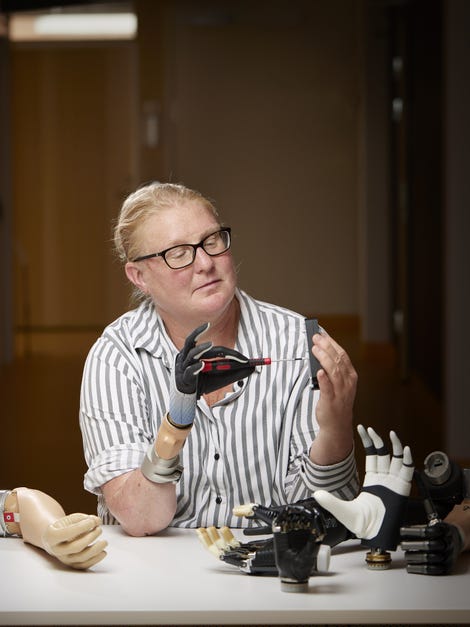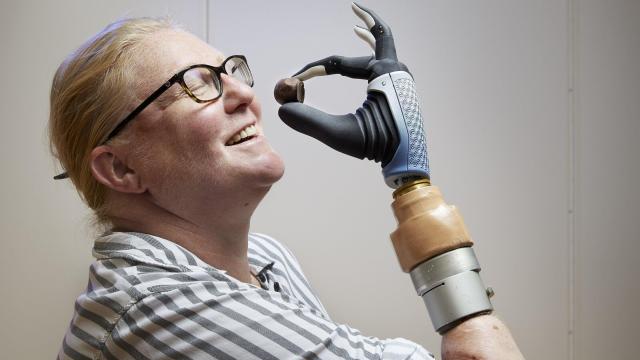Scientists appear to have developed a hand prosthetic that provides much more control and comfort than those available today. In new research this week, they’ve detailed the case of a Swedish woman who has successfully worn the advanced bionic limb for years with no major issues, while experiencing significantly less pain than before.
The woman, identified as Karin, suffered a farming injury that took much of her right arm below the elbow over 20 years ago. Like many amputees, Karin went on to develop phantom limb pain, which required her to take high doses of medication to manage. She also benefited little from conventional prosthetics, finding them too unwieldy to use for daily life. But several years ago, Karin became one of the first patients enrolled in the DeTOP project, an expansive research study funded by the European Union and involving dozens of scientists across Europe that’s looking to develop the next generation of bionic limbs.

Karin’s prosthesis was created by the Italian company Presilia and is nicknamed Mia Hand. It’s outfitted with state-of-art technology, including AI. And to further improve its functionality, her surgeons performed osseointegration during the attachment procedure, a process that directly fuses bone to the implant, ideally creating a stronger mechanical connection. They also implanted electrodes in her arm muscles and nerves, as well as rewired some of her nerves in the remaining part of the arm. The result is a robotic limb that’s directly connected to Karin’s neuromusculoskeletal system.
Much like a real flesh-and-blood hand, it’s controlled by Karin’s nervous system and provides sensory feedback. Her new hand can purportedly perform around 80% of the typical daily tasks that a regular limb would be able to do. And it’s substantially reduced her phantom limb pain and the need for medication. The team’s findings on Mia Hand’s initial success are published in the journal Science Robotics.
“Karin was the first person with below-elbow amputation who received this new concept of a highly integrated bionic hand that can be used independently and reliably in daily life,” said lead study author Max Ortiz-Catalan, head of neural prosthetics research at the Bionics Institute in Australia, in a statement from the Sant’Anna School of Advanced Studies, one of the many other universities involved in the project.
He added: ”The fact that she has been able to use her prosthesis comfortably and effectively in daily activities for years is a promising testament to the potential life-changing capabilities of this novel technology for individuals facing limb loss.”
Karin is one of three patients enrolled in the DeTOP project. And while it may take time for the research on these patients to reach completion, the hope is that these prosthetics can eventually become the new standard for upper limb amputees. For Karin, it’s already been a tremendous gift.
“For me, this research has meant a lot, as it has given me a better life,” she said in the university release.
